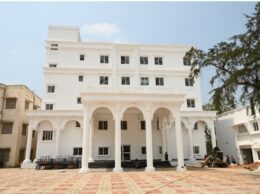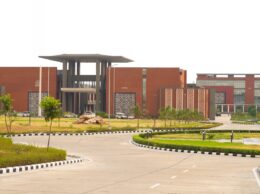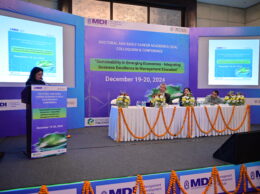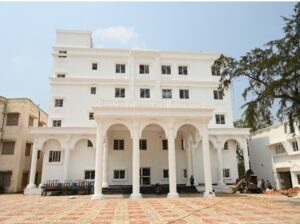New Delhi, October 13, 2017: Two Aerospace Engineering students of UPES represented India at the Poland Mars Analogue Simulation (PMAS) 2017, organized by the Space Exploration Project Group in collaboration with European Space Agency. The mission’s aim was to evaluate the joint human and robotic surface operations on the Mars and Lunar surface. UPES students N.Adhithiyan and Rohan Chandra were part of a team of six analogue astronauts and were placed in the Martian habitat at M.A.R.S Laboratory near Rzepiennik Biskupi, Poland to conduct scientific research.
Explaining whether analogue simulations like this can really help us get to Mars, Sebastian Hettrich, PMAS 2017 Mission Director said in an article, “Analogue Missions in general are good and low-cost opportunities to test and study certain aspects of a long-term space exploration mission, such as a Mars mission. They help us understand and address potential risks and issues that the future Mars astronauts will have to face, and therefore, can make such missions much safer and scientifically more efficient.”
Sharing his experience, Rohan Chandra who was a Record Officer at the mission said, “As a Record officer, I was responsible for logging events, occurrences, instructions, activities and conditions at the habitat and also at the Mission Support Centre. These log-files are crucial for the reconstruction of the events during the mission, the analyses of workflows and procedures, the planning and scheduling of the analogue astronaut activities and to analyse the overall mission efficiency. It was perhaps the most amazing learning experience for me where I got to learn in the best way possible, with the best mentors and organizations.”
N Adhithiyan, who worked as a Science Data office at the mission shared, “I was responsible for the scientific results, research data, documents, video and audio transmission and all the other data that was sent to and from the habitat to the Mission Support Centre.”
The exploration mission was isolated from the rest of the world. The astronauts’ only communication with the outside world was through a 15-minute time-delayed link (in Mars mode) with the Flight Support Team (FST) in the Mission Support Centre located 89 miles away in the offices of ABM Space in Torun, Poland.









